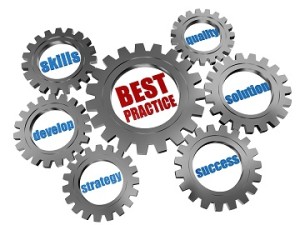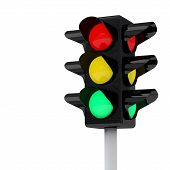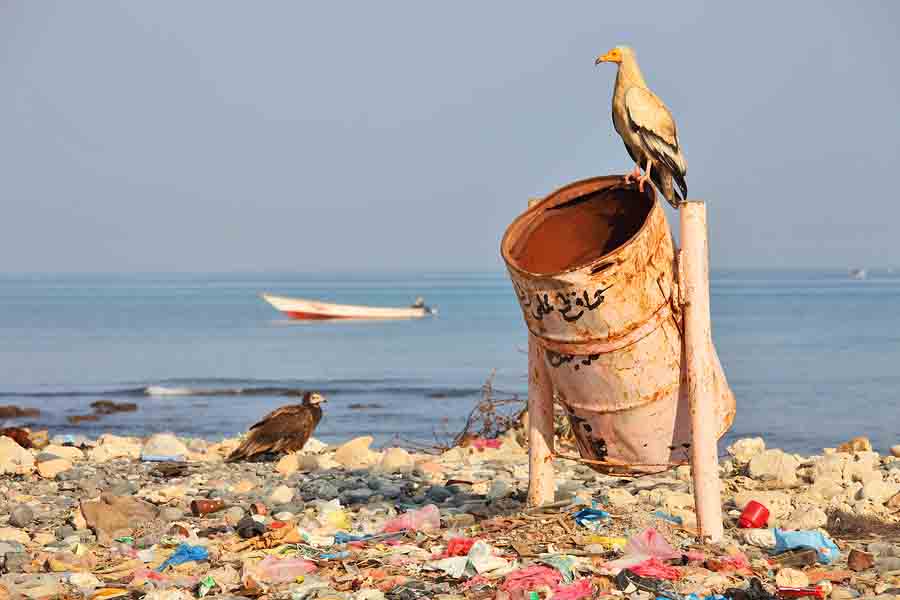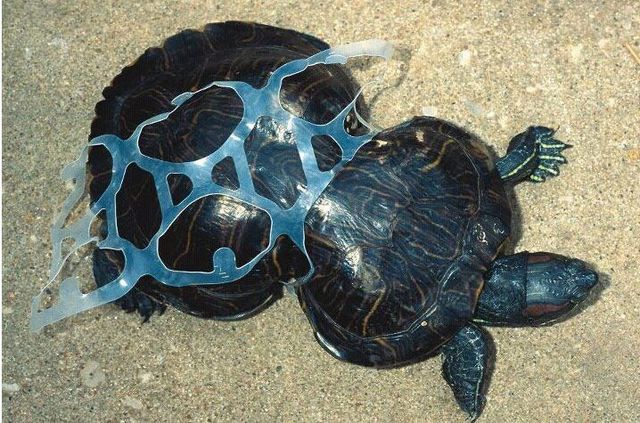BEST PRACTICES
 From Wikipedia:
From Wikipedia:“A best practice is a method or technique that has consistently shown results superior to those achieved with other means, and that is used as a benchmark. In addition, a “best” practice can evolve to become better as improvements are discovered.” (Further, many “best practices” could be computer-modeled and potentially improved.)Though there may be difficulties associated with applying “best practices” from one specific discipline or organization to another with certain differences, and any such application must be done with a certain amount of care and attention to this kind of complication, there are clearly opportunities to improve functions and outcomes when best practices are substituted for operational practices that are yielding substandard or frustrating results.Some real examples of best practices (or potential best practices….if further studied and quantified) follow—however, copyright laws prevent conveying printed articles in full, or even quoting large sections of such articles (with some “fair use” exceptions). This indicates that a “best practice” might be to allow written material used for education, science or sociology to more fully escape copyright laws.
School reform should include an emphasis on empathy.
“In Canada, child advocate Mary Gordon established Roots of Empathy, a nonprofit aimed at students in kindergarten through eighth grade. The program, now up and running at 12 sites in Canada and three in the United States, brings in a parent and baby to visit classrooms over nine months, and a trained empathy instructor helps children figure out what a baby is feeling from watching its face and body. According to the scientific director of Healthy Child Manitoba in Canada, the program reduced the probability of its participants getting into fights from 15 percent to 8 percent.”
students in kindergarten through eighth grade. The program, now up and running at 12 sites in Canada and three in the United States, brings in a parent and baby to visit classrooms over nine months, and a trained empathy instructor helps children figure out what a baby is feeling from watching its face and body. According to the scientific director of Healthy Child Manitoba in Canada, the program reduced the probability of its participants getting into fights from 15 percent to 8 percent.”
 Adult education critical to upward mobility.
Adult education critical to upward mobility.
“In Finland, Denmark and the Netherlands, more than 60 percent of adults took part is either job training or continuing education. In Italy, by contrast, the rate was half that.” [And upward mobility is much greater in these northern European countries.]
(US) “Education Secretary Arne Duncan said in a statement the nation needs to find ways to reach more adults to upgrade their skills. Otherwise, he said, ‘no matter how hard they work, these adults will be stuck, unable to support their families and contribute fully to our country.’ ”
Here are some ways to improve our public schools.
“Teachers learn that they can expect to be evaluated poorly if they refer to the administration students who misbehave.
“Because of this, a teacher often must function in compromised learning environments that are ineffective and inefficient, and that can quickly become unpleasant and/or chaotic.
“A teacher should be able to routinely refer a student who contaminates the environment to a particular akamai and understanding person, who can assess the circumstance and create strategies to either help the student become a productive member of the class or, if necessary, find an alternative, suitable environment.
“School administrators should take ultimate responsibility for maintaining wholesome classroom learning environments and not avoid that responsibility by making entirely unreasonable demands of their teachers.”
 To build a better world, give more power to women.
To build a better world, give more power to women.
“Anyone thinking that women’s empowerment is a side issue also wasn’t paying attention when Malala Yousafzai, shot in the head by the Pakistani Taliban for advocating girls’ education, spoke to the United Nations in July on her 16th birthday. Malala highlighted the third reason to focus on empowering women and girls. It’s perhaps the best leverage we have to fight social ills.
“As Malala noted, a powerful force for change in the world is education, especially girls’ education. The United States has invested thousands of lives and hundreds of billions of dollars in Afghanistan and Pakistan since 9/11 and accomplished little; maybe we should have invested more in the education toolbox.”
Jeremiah Anti-poverty Program embarks on expansion.
“The Jeremiah Program, which has helped more than a thousand Minnesota mothers and their children lift themselves out of poverty, is taking its formula nationwide…..
“That formula includes safe, affordable housing for the family; quality early education for the kids; “life skills” training and a careertrack college education for mom — all linked to businesses, volunteers and the broader community to support the families along the way.
“A Wilder Foundation analysis of the model released this year showed that for every dollar invested in the program, there was a $4 return. Those savings took the form of less reliance on public assistance, increased taxes paid by the parents and lower spending on special education and other services for their children.”
A simple, partially fictionalized example follows, to illustrate the kinds of improvements anticipated by applying best practices (and to illustrate how best practices can be improved).
A fairly recent improvement over the past few years has been to allow traffic that is controlled by a “left turn arrow” to proceed to turn left when the green arrow is not illuminated, usually accompanied by an advisory sign, “Left turn OK during green light when clear” (observed for example on Kuhio Ave. in Waikiki). This is a “best practice” because traffic that piles up in the left turn lane may proceed if safe, rather than wait for the next green arrow. This has clear returns in reducing driver frustration and smog emissions from vehicles idling at the stop. An even better practice might be to have these signalized left turn arrows illuminated at the END of the green cycle rather than the beginning. THEN, traffic could turn left during the regular green cycle, and if cleared, the left turn arrow would not be needed during that cycle at all, saving time for traffic waiting at the cross street.
A “best practice” observed in Zihuatanejo, Mexico is that the green light starts to blink or flash at about 1-second intervals, approximately 5 seconds before the yellow light comes on. This gives drivers warning so that they can plan to slow down for the anticipated stop if it is clear they cannot clear the intersection during that green cycle. Also, it demonstrates that  green lights can be programmed to flash, just like yellow ones and red ones.
green lights can be programmed to flash, just like yellow ones and red ones.
So here’s an imaginary improved “best practice”: There are many minor intersections where red and green signals alternate or cycle, allowing traffic to alternately proceed. Yet, many times, the traffic experiencing the red light is also experiencing the frustration of having to wait for the green when there’s no traffic at all facing the green light.
Why not cycle flashing red and flashing yellow lights, instead of solid red and green? That way, each side will alternately get to proceed (flashing yellow), while the other side may proceed (as if after a stop sign), if it’s safe.
These collectively compiled (and improved) best practices could be modeled and studied, or simply adopted as obvious. They could potentially reduce city driving times by 5 or 10% and reduce air pollution by a fairly equivalent amount.
And this is just a small example of the opportunities available in evolving and adopting best practices.
 WorldOpt Institute
WorldOpt Institute













